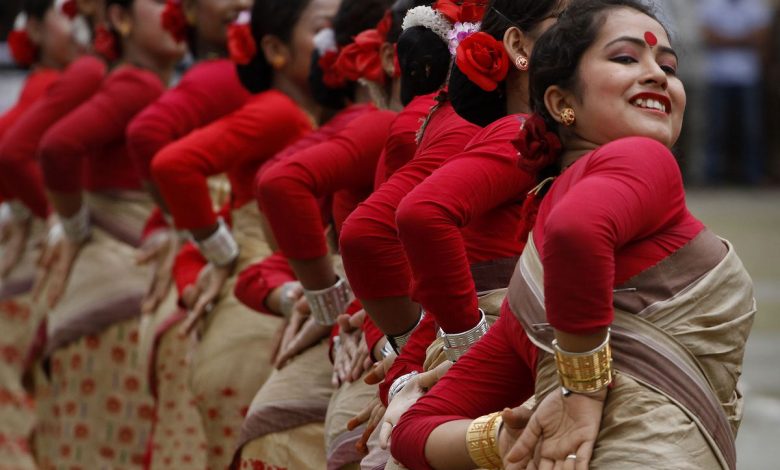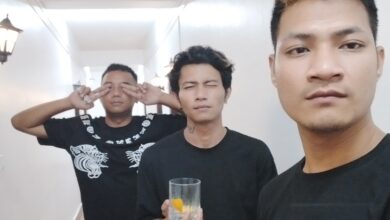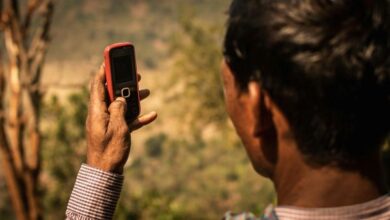
 India is the land of festivals which bring together cultures, religions and social practices. Bihu, which is primarily celebrated in Assam, is also a celebration of unity in diversity. The origin of Bihu is unknown but it is definitely a confluence of three major cultures of Austro-Asiatic, Indo-Aryan and Tibeto-Burmese. Later, many immigrants from India and abroad, including the Muslims, imbibed the Assamese culture and subscribed to flourish Bihu syncretizing with their own cultural elements and finally attained today’s form.
India is the land of festivals which bring together cultures, religions and social practices. Bihu, which is primarily celebrated in Assam, is also a celebration of unity in diversity. The origin of Bihu is unknown but it is definitely a confluence of three major cultures of Austro-Asiatic, Indo-Aryan and Tibeto-Burmese. Later, many immigrants from India and abroad, including the Muslims, imbibed the Assamese culture and subscribed to flourish Bihu syncretizing with their own cultural elements and finally attained today’s form.
There are three types of Bihu — Kati, Magh and Bohag — celebrated at three stages of agricultural life.
Origin
Bohag or Rongali Bihu is originally dance-centric. It is an occasion for youngsters to express love and joy. The first lyrics of Bihu are called ‘Bonoriya Geet’, which is the wild song of young hearts longing for lovers.
Bonoriya Geet has its origin in the paddy fields and forests, where people worked, far away from their settlements. It would be a suitable place to express love through these songs. These songs have an erotic undertone.
Bihu & Bhakti Movement
During bhakti (devotion) or neo-Vaishnavite movement from 15th century, Assamese polymath and social reformer Sankardev unfettred the society from the age-old practices of class and caste systems. His teachings were about one supreme soul in the universe (Ek Saran).
Although there was no direct influence on Bihu, but Sankardev’s spiritual movement brought about a dramatic change in the Bihu performance. Some spiritually refined words and names of Hindu gods are mentioned in chants during Husori, a form of male Bihu, and this is the effect of the Bhakti Movement.
Royal recognition of Bihu
In 1696, Ahom monarch Rudra Singha patronised Bihu for the first time by inviting or permitting to perform in courtyard of Ranghar (house of joy). Once considered a low-key festival celebrated by a few on the riverbank or at the cultivation field immediately became widespread. Many people belonging to different ethnic groups, caste and communities embraced the festival leading to a new form of Assamese cultural nationalism. Songs became more panegyric praising the king and his deeds.
Also, it is believed that participation of women in Bihu celebrations started with the royal recognition of the festival under the Ahom monarch. Before that, it was a social taboo for men and women to dance together.
Bihu under British rule
After the Treaty of Yandaboo in 1826 between British and Burma, the former began to rule Assam. Before that, Assam was ruled by the Ahom dynasty from Upper Assam till Nowgong (Nagaon) and the Koch kingdom from Lower Assam to Nowgong.
The British unified Assam and cultural exchange began between two prior disbanded parts of the state. Subsequently, Bihu became popular even in Lower Assam and gradually transformed into a festival of the whole state.
However, in the 19th century, a few English-educated Assamese like Haliram Dhekial Phukan, Anandaram Dhekial Phukan, Gunabhiram Baruah and Kamalakanta Bhattacharya demoralised the celebration of Bihu as a dance of the barbarians. But cultural maestros like Jyoti Prasad Agarwala, Lakshminath Bezbaruah, Raghunat Choudhury and social worker Radha Govinda Baruah encouraged the festival and widely promoted it.
Bohag Bihu
As mentioned earlier, Bohag Bihu is dance-centric and is associated with various dance forms.
Husori: Performed in the courtyard of villagers since 1896 when it was first performed in the courtyard of Ranghar. Initially, only men would participate but now women too have become an integral part of it.
Mukoli Bihu: This dance form is performed in open space with both boys and girls participating.
Jeng Bihu/Rati Bihu: Traditionally, it is performed by women. No musical instrument is used. Rati Bihu is supposed to be celebrated at night away from men’s gaze, symbolising women liberation. The repertoire is the same as Jeng Bihu.
Gos Tolor Bihu: Bihu under a banyan or a big tree. This was an earlier version of Mukoli Bihu.
Faat Bihu: It is celebrated in Mohguli Chapori near the Charikoriya river of Dhakuwakhana. It is one of the oldest Bihu celebrations of Assam. Faat means trading place or torn out. It is believed that traders from different places assembled there for Bihu. For uncontrolled excitement and gaieties, performers’ clothes were torn into strips and musical instruments were cracked. Hence, the name Faat Bihu.
Dance & orchestra
Khupat Dhora Dance: Female performers dance to the orchestra of dhol (drum), tal (cymbals), hutuli (made of mud), flute, toka and gogona (both are made of bamboo). Here, dancers put their hands on the nape of their necks while grooving to the music.
Takuri Ghura Nach: Dancing very speedily and pirouetting at the same place, dancers partially become invisible.
Pokhila Uradi Nach: Dancing like a butterfly. The dancers’ hands move like wings of a butterfly.
Footsteps
Mokora Buloni: Dancers move their feet like a spider.
Porua Buloni: The feet motion of a dancer is like an ant, moving in a row in a particular direction.
Bihu has survived the test of time and had undergone changes through socio-cultural upheavals. In the process, it has become an intrinsic part of the Assamese culture.
(The author is a noted cultural activist, actor, scriptwriter and poet)




